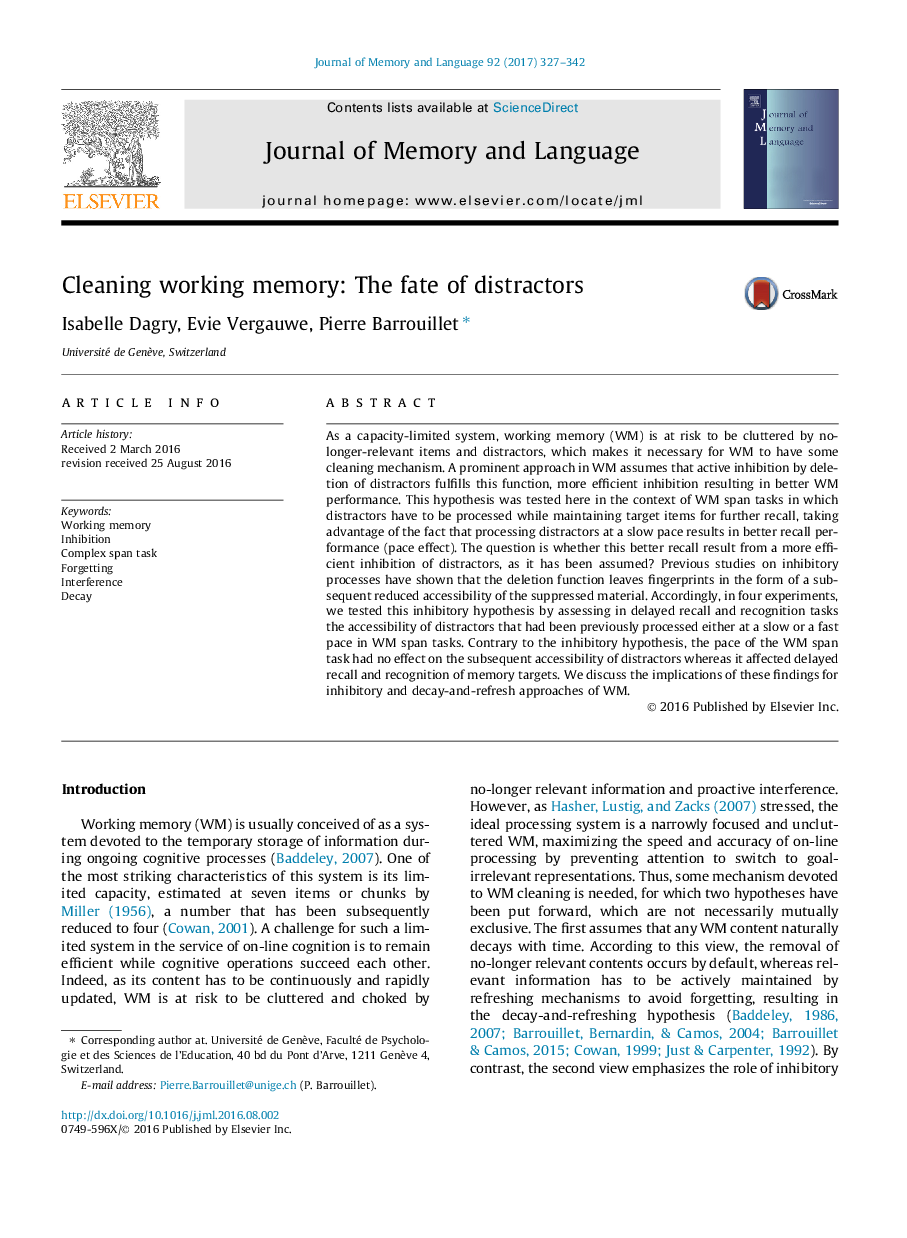| Article ID | Journal | Published Year | Pages | File Type |
|---|---|---|---|---|
| 7296867 | Journal of Memory and Language | 2017 | 16 Pages |
Abstract
As a capacity-limited system, working memory (WM) is at risk to be cluttered by no-longer-relevant items and distractors, which makes it necessary for WM to have some cleaning mechanism. A prominent approach in WM assumes that active inhibition by deletion of distractors fulfills this function, more efficient inhibition resulting in better WM performance. This hypothesis was tested here in the context of WM span tasks in which distractors have to be processed while maintaining target items for further recall, taking advantage of the fact that processing distractors at a slow pace results in better recall performance (pace effect). The question is whether this better recall result from a more efficient inhibition of distractors, as it has been assumed? Previous studies on inhibitory processes have shown that the deletion function leaves fingerprints in the form of a subsequent reduced accessibility of the suppressed material. Accordingly, in four experiments, we tested this inhibitory hypothesis by assessing in delayed recall and recognition tasks the accessibility of distractors that had been previously processed either at a slow or a fast pace in WM span tasks. Contrary to the inhibitory hypothesis, the pace of the WM span task had no effect on the subsequent accessibility of distractors whereas it affected delayed recall and recognition of memory targets. We discuss the implications of these findings for inhibitory and decay-and-refresh approaches of WM.
Related Topics
Life Sciences
Neuroscience
Cognitive Neuroscience
Authors
Isabelle Dagry, Evie Vergauwe, Pierre Barrouillet,
